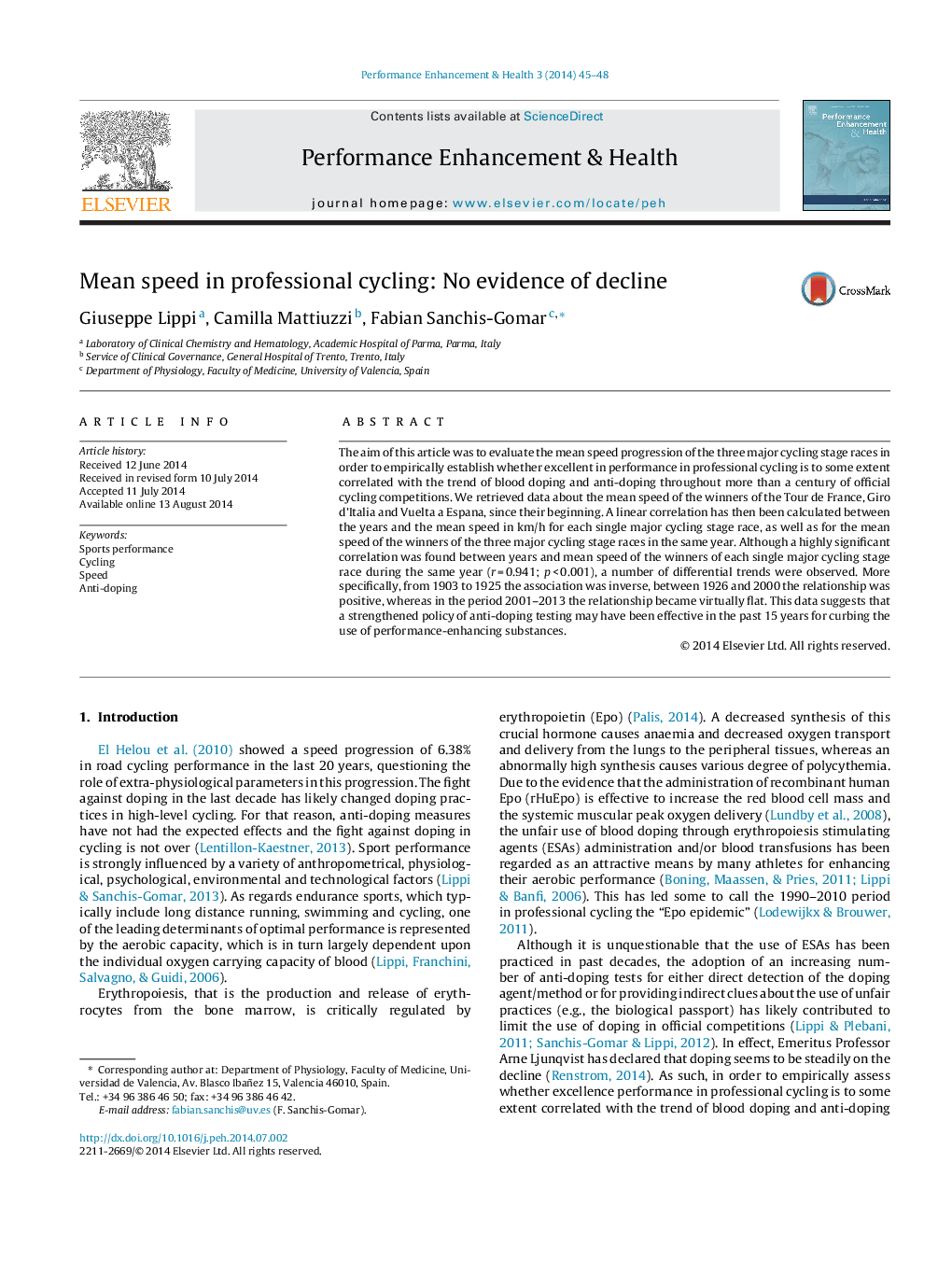| کد مقاله | کد نشریه | سال انتشار | مقاله انگلیسی | نسخه تمام متن |
|---|---|---|---|---|
| 889534 | 913949 | 2014 | 4 صفحه PDF | دانلود رایگان |
• Analysis of mean speed progression of the three major cycling stages races 1903-2013 revealed differential trends.
• 1903 to 1925 saw an inverse trend; 1926 to 2000 was positive; 2001-2013 was virtually flat.
• Evidence implies the strengthened anti-doping policy may have contributed to a change in doping behaviour.
The aim of this article was to evaluate the mean speed progression of the three major cycling stage races in order to empirically establish whether excellent in performance in professional cycling is to some extent correlated with the trend of blood doping and anti-doping throughout more than a century of official cycling competitions. We retrieved data about the mean speed of the winners of the Tour de France, Giro d’Italia and Vuelta a Espana, since their beginning. A linear correlation has then been calculated between the years and the mean speed in km/h for each single major cycling stage race, as well as for the mean speed of the winners of the three major cycling stage races in the same year. Although a highly significant correlation was found between years and mean speed of the winners of each single major cycling stage race during the same year (r = 0.941; p < 0.001), a number of differential trends were observed. More specifically, from 1903 to 1925 the association was inverse, between 1926 and 2000 the relationship was positive, whereas in the period 2001–2013 the relationship became virtually flat. This data suggests that a strengthened policy of anti-doping testing may have been effective in the past 15 years for curbing the use of performance-enhancing substances.
Journal: Performance Enhancement & Health - Volume 3, Issue 1, March 2014, Pages 45–48
